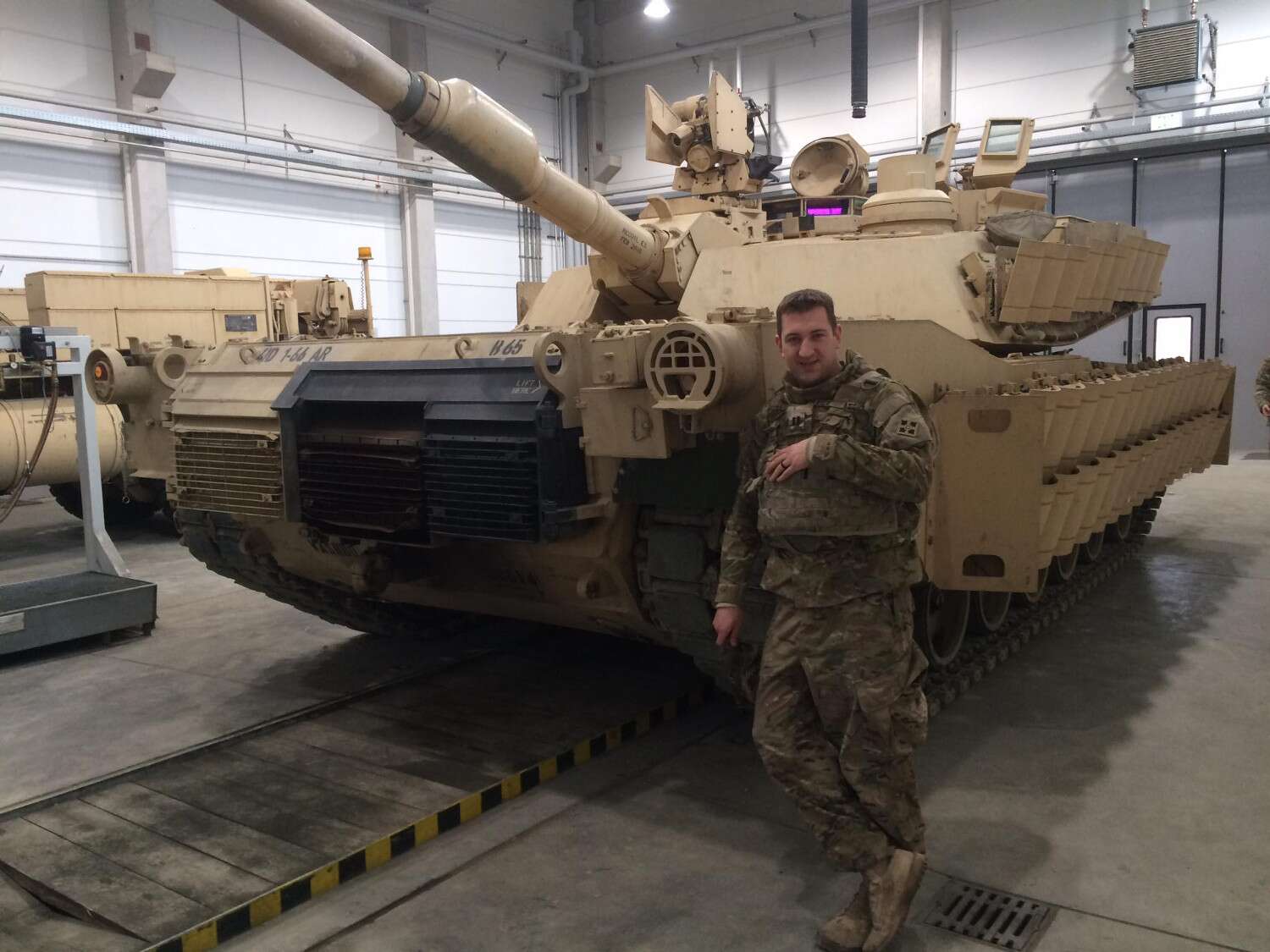US Army Unit Bolsters Abrams Tanks With ‘Reactive’ Armor
By
-
March 8, 2017
Tank and maintenance crews with 1st Battalion, 66th Armor Regiment, install reactive armor tiles onto a M1A2 Abrams tank at the 7th Army Training Command's Grafenwoehr Training Area, Germany, Feb. 28, 2017. The installation of the Abrams Reactive Armor Tile system will enhance the tank's defensive capabilities, providing a greater deterrent against aggression as the 3rd ABCT maintains a persistent presence in Central and Eastern Europe as the rotational ABCT for Atlantic Resolve. Army photo by Capt. (Chaplain) Malcolm Rios
GRAFENWOEHR TRAINING AREA, Germany: Tank and maintenance crews from the 1st Battalion, 66th Armor Regiment assigned here are giving their M1A2 Abrams main battle tanks a buffed-up look that improves the tanks’ overall defensive capabilities.
The crews, with the 3rd Armored Brigade Combat Team, 4th Infantry Division, which is serving as the initial ABCT rotational force in support of Atlantic Resolve, began installing the Abrams Reactive Armor Tile system Feb. 28 to tank hulls and turrets.
Reactive Armor ‘Adds Extra Layers of Protection’
“The ARAT adds extra layers of protection to the tank and the crew members,” said Army 1st Sgt. Ryan Dilling, senior noncommissioned officer of Bravo Company, the first unit to install the tiles.
The tiles “are placed on both sides of the hull and turret,” Dilling said. “The reactive tiles prevent penetration [by] various weapon systems, such as rocket-propelled grenades.”
Beefing up U.S. armor also serves as a greater deterrent to acts of aggression against NATO nations as the combat team rolls out stronger tanks to conduct training with allies throughout Central and Eastern Europe, Dilling said.
The addition of the angled tiles to the 1st Battalion, 66th Armor Regiment’s tanks has been a cooperative effort with the Army’s Warren, Michigan-based Tank-automotive and Armaments Command Life Cycle Management Command, said Army Maj. David Campbell, battalion operations officer.
“TACOM maintenance workers welded the brackets to hold the tiles on the tanks. After completion of the bracket welding, tank crews are then responsible for installing the reactive tiles,” Campbell said.
Deflecting the Blast
“Depending on what terrain you’re in, whether you’re in rural or urban terrain, the purpose of angled tiles is so that a blast will go down or upwards, which will allow the impact to deflect outward rather than at the tank crew,” Dilling said.
He said the angles of the tiles can be repositioned depending on the situation.
“If you have dismounts on the ground and they’re working in close proximity of the tank, you’d want to angle the tiles down so if there was a blast, it would go out and down to minimize the effect against soldiers nearby,” he said.
Dilling added, “If you were in an urban environment and you had adversaries shooting from second or third stories or even on rooftops and the tiles were activated, the blast would push out and upwards toward the threat.”
Army Capt. James England, Bravo Company commander, said the ARAT system adds protection while not inhibiting tank speeds.
“The ARAT looks like a good package,” England said. “In our current operating environment, should we have to engage a near-peer threat, we have to retain that mobility.”





